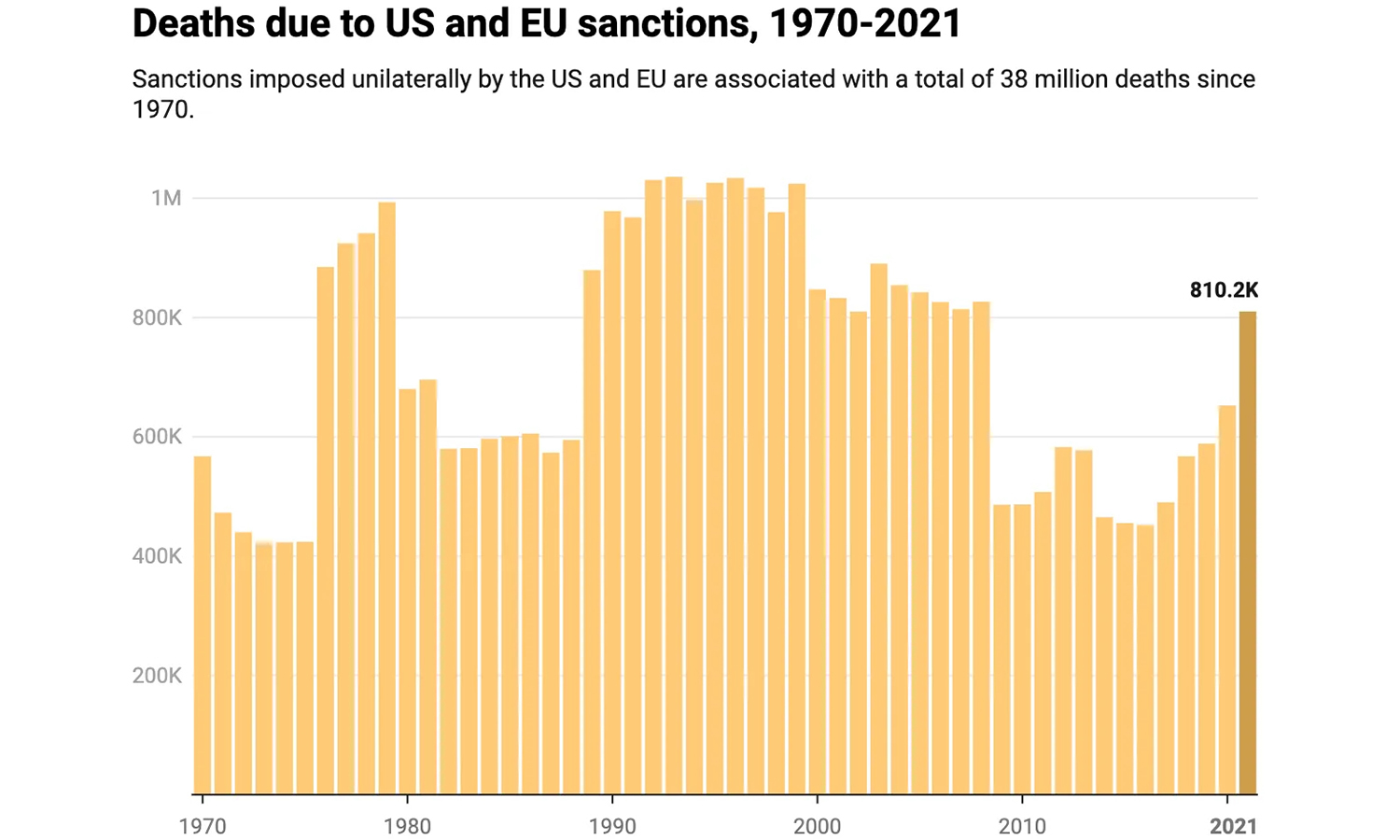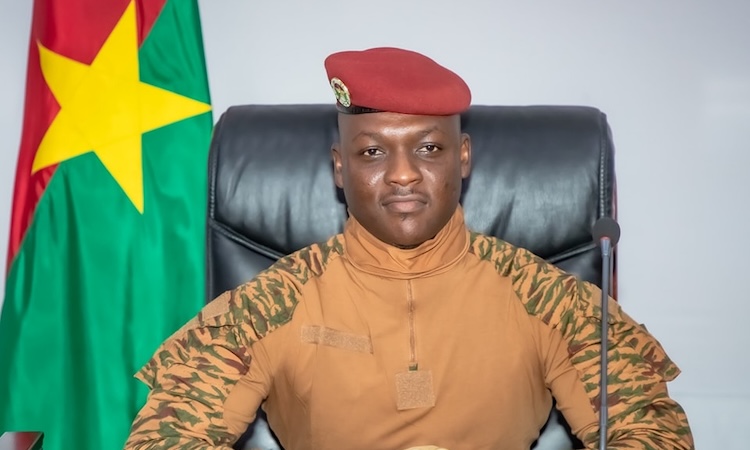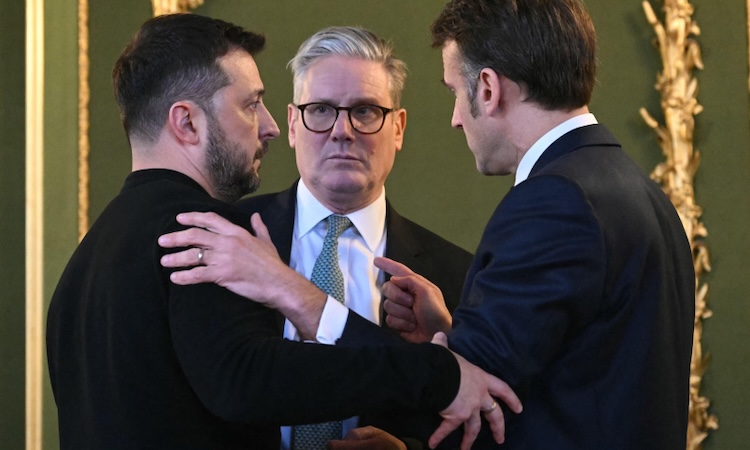The fallout from the disastrous collapse of the Soviet Union is an ever-present factor at the root of many of today’s wars and conflicts. The wars between Armenia and Azerbaijan are a prime example of this, as is, of course, the ongoing Russian special military operation in Ukraine.
The war between Armenia and Azerbaijan dates back to 1988, when the growth of reactionary petty-bourgeois nationalist tendencies in the Soviet republics exploded into open conflict as the Gorbachev clique pushed the USSR towards collapse.
The first war over the region known as Nagorno-Karabakh was concluded after six years of fighting in 1994. Arising from this was a frozen conflict centred on the Armenian-controlled Republic of Artsakh. The Armenian side prevailed in this first war and the Republic of Artsakh, though nominally independent, was dependent upon the deployment of the Armenian armed forces for its continued security.
This remained the case until the war of 2020, which saw the armed forces of Azerbaijan push back the Armenians and seize several key areas formerly controlled by the Artsakh government.
A tenuous ceasefire was brokered at that time by the Russian government, but this fragile peace was shattered on 21 September 2023, when the Azeris commenced shelling of the Artsakh capital Stepanakert. A full-fledged invasion quickly followed, leading Armenians to fear mass expulsions from their homeland and a possible genocide.
This conflict has been fuelled by the reckless behaviour of Armenian prime minister Nikol Pashinyan, who all but laid out the red carpet for the Azeri invasion. It was Pashinyan who withdrew Armenia’s army from Artsakh in 2022 and went on to acknowledge Nagorno-Karabakh as sovereign Azeri territory.
Having thus effectively abandoned Artsakh to its fate, it comes as no surprise that the territory is now being reabsorbed into Azerbaijan. The Azeri government correctly interpreted Pashinyan’s actions as signalling his consenting to their takeover. Pashinyan has done this all whilst loudly proclaiming the whole fiasco to be Russia’s fault.
In order to understand these events properly, we need to take a step back and examine the role played by US imperialism in both Armenia and Azerbaijan. As ever, a much bigger game is being played by the imperialists, in which the masses of Armenia and Azerbaijan are mere tools for the pursuit of imperialist goals.
We will start by looking at the rise of Nikol Pashinyan and his ascent to power.
The Armenian colour revolution and the rise of Pashinyan
Nikol Pashinyan has been a figure in Armenian politics since the 1990s, but he was catapulted to prominence by the colour revolution of 2018. These events had much in common with similar regime-change operations in Georgia and Ukraine, and the same imperialist agencies were active in their execution.
Armenia has been subjected a to a long-running propaganda campaign run by US imperialism and its agencies such as USAid, the National Endowment for Democracy (NED) and, of course, George Soros’s notorious Open Society Foundation.
The Open Society Foundation takes its name from Karl Popper’s book, The Open Society and its Enemies. This work, published in 1945, was a manual for the defence of liberalism and capitalism. Popper was a rabid anticommunist, and his work become a key reference for academics, journalists and other propagandists during the cold war.
Describing the ‘open society’ as essentially liberalism and it’s ‘enemies’ as Marxism, Karl Popper’s work should be regarded as a full-frontal attack on Marxism and historical materialism in particular.
George Soros, taking this name for his ‘Open Society Foundation’, has run the organisation as a privatised intelligence network working for US imperialism, specialising particularly in the fomentation and execution of regime-change operations, aka ‘colour revolutions’.
The Open Society Foundation, the NED and USAid are the leading agencies through which the USA runs what are known as ‘influencing operations’. These organisations focus on recruiting from the Armenian bourgeoisie and petty bourgeoisie and transforming them into advocates and organisers for what are (in effect) pro-US policies.
As a 2021 paper from the Rand Corporation made clear, the US imperialists’ main interest in Armenia is in its utility as a tool against Russia. This is why Pashinyan has been trying to dismantle Armenia’s army and sever its relationship with the Russian-led Collective Security Treaty Organisation (CSTO).
The proximity of Armenia to Iran also presents US imperialism with the prospect of a physical foothold on the borders of a country it has repeatedly targeted with destabilisation operations.
The control of the Armenian government by US imperialism can be seen in the fact that Pashinyan came to power himself via an imperialist-backed regime-change operation in 2018 – one that was promptly branded the ‘Velvet Revolution’.
Pashinyan’s installation was, of course, welcomed by US imperialist stooge Alexei Navalny, who the US imperialists had hoped to make the leader of their planned colour revolution in Russia.
Pashinyan the traitor
The deal Pashinyan has made with the Azeris has made him persona non grata in Armenia. Mass protests in Yerevan demanding his removal and branding him a traitor to Armenia have seen the police pre-emptively remove public benches for fear of them being made into barricades. This has coincided with the arrest of opposition leaders and the mass detention of demonstrators.
Pashinyan even tried to ban Artsakh residents fleeing the Azeri takeover from entering Armenia, but was forced to back down. Reports suggest that this decision was part of the terms of Artsakh’s surrender to Azerbaijan.
What is even more telling is that these agreements seem to have been in the works for quite some time. The construction of a massive prison in Aghdam, with a capacity for 10,000 people, raises suspicions that the facility was specifically designed to accommodate the implementation of the surrender agreement.
Reasons for Pashinyan’s betrayal of his own people
On paper, Armenia is a Russian ally, being both a member of the CSTO and of the Commonwealth of Independent States (CIS, a fraternity of former Soviet republics). But the Pashinyan regime’s abrupt and abject surrender of Nagorno-Karabakh has led to deteriorating relations with a frustrated Russian government, which has essentially been hamstrung in its role as regional peacekeeper by Yerevan’s unilateral moves.
The Russian government has made repeated offers to assist in boosting Armenia’s security through CSTO training exercises and increased weapon transfers to the country’s armed forces in recent years, but Pashinyan turned them all down.
Why, in that case, did the Armenian government not call upon Russia or the CSTO for assistance? As the Russian ministry of foreign affairs noted in a recent statement:
“In regional affairs, Nikol Pashinyan succumbed to the exhortations of the west, instead of complying with the gentlemen’s agreement of the leaders of Russia, Azerbaijan and Armenia of November 2020 to leave the issue of the status of Nagorno-Karabakh to future generations.
“In Prague and Brussels, he decided to act on the basis of the Alma-Ata declaration of 1991, recognising Azerbaijan’s sovereignty over Nagorno-Karabakh. This fundamentally changed the conditions under which the trilateral statement of 9 November 2020 was signed, as well as the position of the Russian peacekeeping contingent.
“Due to the short-sightedness of the Armenian leadership, it was not possible to implement a number of agreements in the field of strengthening Armenia’s security. In particular, Nikol Pashinyan did not sign the decision already agreed by all the foreign ministers of the six countries to send a CSTO observation mission to the regions of the republic bordering Azerbaijan.”
Pashinyan and his clique opted to refuse all Russia’s offers of support precisely because he and the comprador ruling class he represents were preparing to trade Artsakh to Azerbaijan in the belief that this would then enable them to seek improved relations with the US imperialist bloc.
Given that British, US and French imperialism all have extensive investments in Azerbaijan and the now Azeri occupied territories it is in their interests to see the Baku regime strengthened. To that end, they clearly prevailed upon Pashinyan to give up Artsakh.
Pashinyan has no doubt received sweet promises and sugared lies about entering the European Union and Nato. Ironically enough, the Armenian compradors are running towards these two organisations for shelter just as both are becoming ever more discredited.
There is also little reason to believe Armenia could ever join the EU, and it is certainly the case that Turkey would veto any attempt by the country to join Nato, just as Turkey itself has apparently been on the cusp of joining the EU for three decades but somehow never gets in because too many European nations don’t want it in their club. In just the same way, EU and Nato memberships were dangled in front of the Ukrainian compradors and their fascist gangs who have led their country to the slaughter.
On 22 September 2023, Armenian foreign minister Ararat Mirzoyan, in a speech at the United Nations, demanded the withdrawal of Russian peacekeepers from Nagorno-Karabakh and their replacement by French and American forces. Clearly the Pashinyan clique are desperate to sell their country to the US imperialists at any price.
End of the Nagorno-Karabakh conflict
As of 25 September 2023, the Nagorno-Karabakh conflict was ended by the unconditional surrender of Pashinyan’s Armenia. A sort of testing of the waters over the balance of forces had taken place back in 2016, when a short-lived conflict briefly flared up.
For the first two years of Pashinyan’s rule, the Armenian government’s main concern was to spread anti-Russian propaganda. In 2018, as Armenia was willingly distancing itself from Russia, a few small-scale clashes broke out. In July 2020, heavier clashes took place – likely as a way for Azerbaijan to see what Armenia would do and whether Russia would flinch.
It didn’t. Armenia’s rulers blamed Russia in 2020 (just as they are doing today). Liberal cosmopolitans holding banners saying “Russia go home and never return” were commonplace.
The Pashinyan clique has embarked on a trajectory of total isolation for Armenia. Having distanced themselves from Russia, the Armenian compradors had hoped to transfer their country to the dubious protection of the Nato and EU security umbrella.
But with the opposition of regional powers including Russia and Iran, this is exceedingly unlikely ever to take place. Instead, Pashinyan and his cronies have greatly diminished the Armenian state, left their own people to be ethnically cleansed by the Azeris, and remain increasingly vulnerable to any further territorial grabs that Azerbaijan may choose to launch.
As ever with the puppets of the US imperialism, their criminality is only matched by their stupidity.
The cynical manipulations engaged in by the imperialists are crucial to understanding the situation in Armenia. When US imperialism has an embassy with over 2,000 personnel in Yerevan, as noted recently by Maria Zakharova of the Russian foreign ministry, it is clear that the USA is investing heavily in trying to influence events in the country.
Their aim is always cynical and self-interested, and unfortunately they find ready allies in the weak, comprador bourgeoisies of countries like Armenia, who are not interested in developing their countries but only in selling it off to the highest bidder.
This same comprador layer led Georgia to disaster and is overseeing the catastrophe in Ukraine. The Armenian ruling class has led its country into great peril and only the intervention of a mass movement of patriotic forces will be able to save the country’s sovereignty and independence.
















